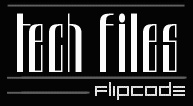 Its a sad fact of game development life that for every successful project completed and on the shelves, another 5-10 projects either didnt complete, or didnt get started properly. In the face of odds like these, its not hard to understand why marketing people push for sequels and licenses. In general, these games are a safer bet, because they have a proven base of potential buyers (i.e. people into the film, or having bought the original). If you look at the practices of the larger game companies, they tend to create "characters" or "licenses" rather than singular "games". Mario, FIFA, Sonic etc are all good examples of this. So where does that leave the rest of the development world?? Well, you can try and out-technology the big guys (ID, EPIC etc), this is a risky business indeed. For a start, you are taking a HUGE risk starting a project like this (for instance, it took epic about 4 years to develop the unreal engine, if you started the same venture now, in 4 years time, it would be almost entirely useless technology). I am not saying that new technology is bad, I am just saying that technology, unless it breaks new ground, isnt going to help sell the new title on its own. (For instance, look at all the "me too" fps games that came out around the same time as halflife and sunk without trace??), compare the success of halflife and say, sin.. and you have an obvious example, halflife wasnt exactly a massive leap in tech above sin, but its definitely more popular.. why?? because valve actually concentrated on the quality of gameplay and immersion, rather than just tech. If smaller companies and dev teams actually forget making "engines" and concentrate more on atmosphere, gameplay, balance and character, I feel that they will fare much better than trying to compete with the others in "engine wars". Anyway, now thats over, i wanted to start a little discussion on something thats got me VERY interested over the last couple of months. Its a neat area of computer graphics called Non Photorealistic Rendering. In an effort to find something new, i was looking for a way to use new hardware in a non-realistic manner (i.e. not in direct competition with a 1001 other "realistic" render engines). I hit on some pretty fantastic stuff. If you are wondering what kind of thing I am talking about? well, the type of thing is as seen in the jungle scenes in disneys tarzan ( a nice blend of traditional painting and computer generated background), and in the film "what dreams may come" with robbin williams (lovely painterly rendered scenery). I am also investigating a technique called "cel shading" as used in many render programs to produce "cartoon like" renders of scenes. I'll let you know how i get on with the things Ive found. One of the biggest issues of these algorithms seems to be the generation of "silouette edges", that is, edges that form the outline of the object. I am investigating efficient ways of storing this information currently (and precalculating it too). From what I know about future hardware and api directions, I fully see this area of rendering and game content to be VERY rich in the next 2 years. Hopefully i can contribute to a new area of game graphics, and perhaps push the limits of hardware in a new direction too! :) In case your wondering about NPR and its associated techniques, I will put a set of my bookmarked links in a future article on NPR techniques (when Ive had time to try a few out for size).  
|

